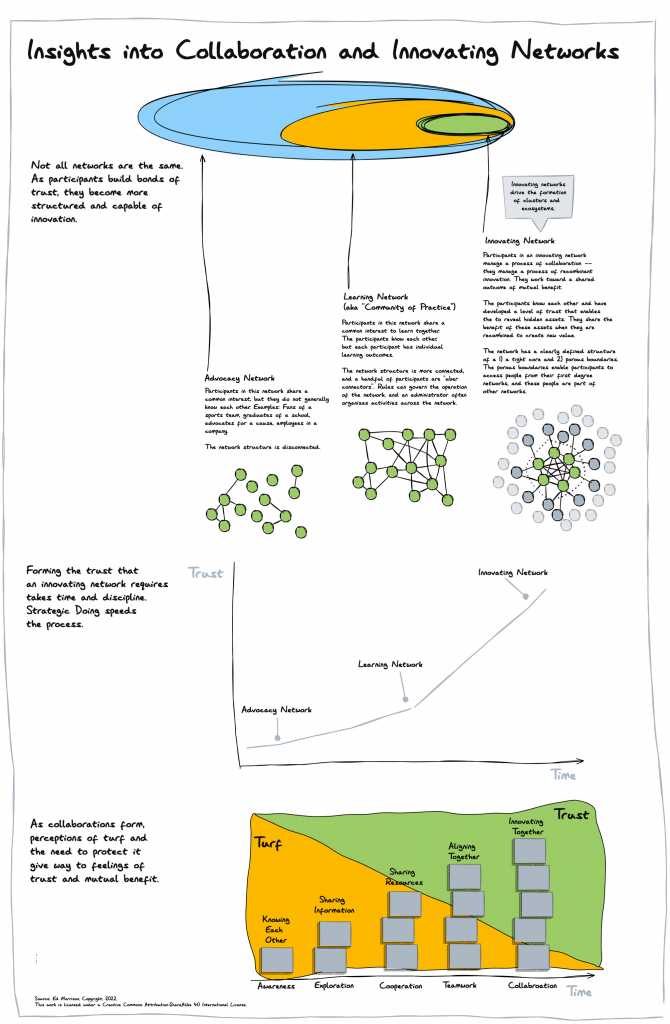Some Insights on How Ecosystems Form
There’s a lot of talk about ecosystems these days. Here are some thoughts based on my experience working with networks over the past thirty or so years.
Insight 1: Ecosystems are invisible. That means we need to draw pictures to see them. Much like a molecular biologist relies on pictures to understand signaling pathways.
Insight 2: Three different types of networks combine to form an ecosystem: advocacy, learning, and innovating networks. Innovating networks make ecosystems distinguishable from other types of networks. Innovating networks have a particular structure: tight core teams and porous boundaries.
Insight 3: Innovating networks, the main value generators of an ecosystem, take time and trust to develop. Participants in an innovation ecosystem follow a process of collaboration by which they generate new, shared value. Collaboration is a process of recombinant innovation among partners who have developed a spirit of mutuality and trust. Partners generate new value by experimenting with recombining the assets embedded in their networks.
Insight 4: Ecosystems emerge from platforms that provide safe spaces for collaborations to form. While we cannot manage ecosystems, we can manage the rules, activities, and participants on the platform. Japanese scholars Nonaka and Konno call these safe spaces “Ba”. It’s an important concept.
Insight 5: Protocols of simple rules are critical to accelerate the development of ecosystems. Simple rules can improve the volume and velocity of collaborations and the productivity of an ecosystem. In complex environments, strategy emerges from following simple rules. #strategicdoing provides this type of protocol of simple rules. This practice evolved over thirty years. Multiple streams of scholarly research explain why this approach works.
